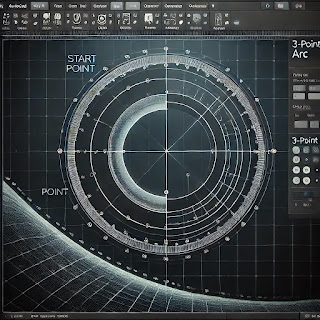History of the AutoCAD
AutoCAD, developed by Autodesk, is one of the oldest and most widely used Computer-Aided Design (CAD) software platforms in the world. Its history is a testament to the evolution of digital design tools that have transformed the way architects, engineers, and designers work today.
1982: The Beginning
AutoCAD was first released in December 1982 by Autodesk, a company founded by John Walker and a group of other software developers. The software was initially developed as a desktop application running on microcomputers with internal graphics controllers. Before AutoCAD, most commercial CAD programs ran on mainframe computers or minicomputers, with each CAD operator (user) working at a separate graphics terminal. AutoCAD was different because it was designed to be used on a personal computer.
1980s: Rapid Adoption and Development
AutoCAD quickly became popular for its ease of use, affordability, and ability to be used on a personal computer. The early versions of AutoCAD helped users create simple 2D drawings with basic geometric shapes. As technology advanced, Autodesk continued to add more features, enhancing its capabilities with each iteration. During this period, AutoCAD established itself as a critical tool for drafting and design, leading to widespread adoption in industries such as architecture, engineering, and construction.
1990s: Introduction of 3D Modeling
The 1990s saw significant enhancements in AutoCAD’s functionality, including the introduction of 3D modeling. This was a major step forward, allowing users to create three-dimensional models of their designs, not just flat drawings. This era also saw the expansion of AutoCAD into new areas, including civil engineering and mechanical design, broadening its application across various industries.
2000s: Advancements and New Variants
The 2000s brought further advancements with the integration of internet technology. Autodesk launched AutoCAD 2000 which featured multiple improvements, including enhanced user interface, better management of drawings, and advanced graphical presentation. During this decade, Autodesk also introduced specialized variants of AutoCAD, such as AutoCAD Architecture, AutoCAD Electrical, and AutoCAD Civil 3D, each tailored to the needs of different engineering disciplines.
2010s: Mobile and Cloud Integration
In the 2010s, Autodesk focused on making AutoCAD more accessible. The launch of AutoCAD for mobile and web apps marked a significant shift, allowing users to work on their designs anywhere, not just from a workstation. The introduction of AutoCAD 360, now known as AutoCAD mobile app, enabled users to view, edit, and share AutoCAD drawings on mobile devices. Autodesk also embraced cloud technology, enhancing collaborative projects by allowing multiple users to access and work on the same project from different locations.
2020s: AI and Machine Learning
The latest versions of AutoCAD feature more sophisticated tools, including the integration of AI and machine learning technologies. These innovations are designed to automate tasks, predict user preferences, and improve the efficiency of the design process. AutoCAD continues to evolve, incorporating new technologies to stay at the forefront of the CAD software industry.
Conclusion
From its inception as a simple drawing tool on the earliest PCs to becoming a powerful, multifaceted program that supports complex design workflows in a variety of industries, AutoCAD’s history reflects the technological advancements in computer hardware and software development. Its ongoing development continues to make it a key tool for designers around the world, shaping the environments in which we live and work.




Comments
Post a Comment